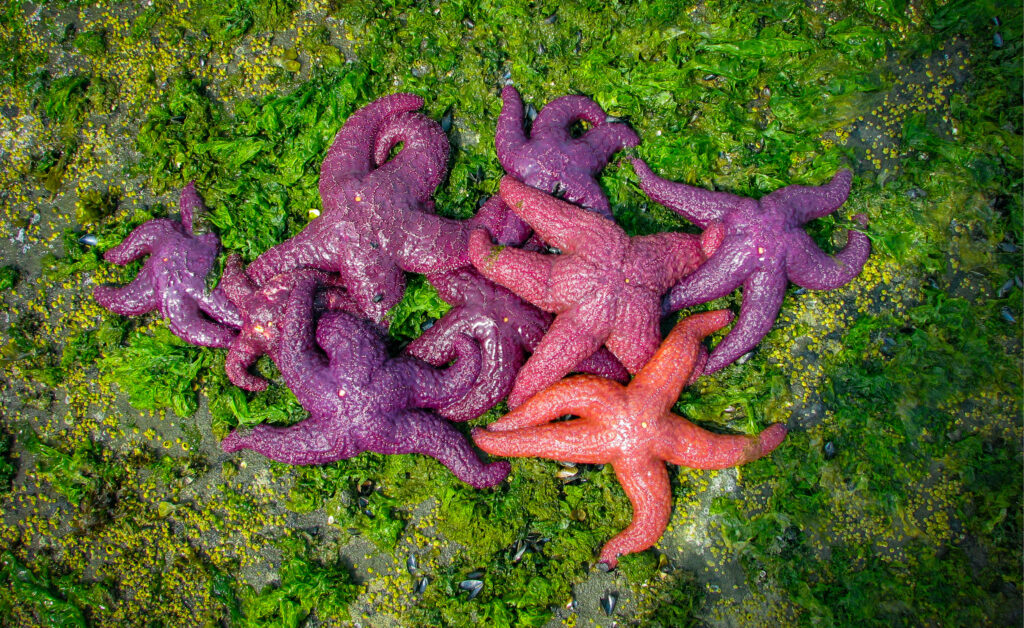story and photo by Tina Kelly –
We’re at the midway mark. One more month of school holidays and I’m boldly assuming some of us have beach time, or more beach time, on the calendar.
When the tide is out there is a unique world to explore. The flora and fauna inhabiting this zone where land and sea overlap are adapted to survive highly variable conditions – exposure to air, the heat of the sun, changes in salinity, and predators from land and sky.
Exploring the intertidal zone also poses challenges for us, and planning for safety is an important first step. Wet and slippery are two descriptive words for rocky intertidal surfaces. Add the presence of sharp barnacle exoskeletons to the mix and tip #1 is appropriate footwear; consider shoes with covered toes and a good grip. Dress for the weather and take an extra layer; as we know, weather can change quickly and it is often cooler by the sea. Pack sunscreen, snacks and lots of water to drink.
After your safety is sorted, we can focus on respecting the environment and wildlife. For some intertidal life you’ll encounter, the best practise is to look rather than touch. Your footsteps and shadow will stop tide pool animals in their tracks but do your best imitation of a patient great blue heron and you’ll see action – crabs will scuttle and fish will dart. Watch the animals’ behaviour and make observations. When it comes to fish, aiming for a hands-off/net-off approach is best. Fish are covered in a slime coat and any disturbance to this protective layer provides an opportunity for naturally-occurring bacteria and parasites to access the fish and have a negative effect on their health.
To survive in this zone, many animals are adapted to withstand crashing waves and to avoid drying out. You won’t be surprised to find many species are tightly attached. Go ahead and gently, with wet hands, touch purple sea stars, chitons and other invertebrates, but you may cause harm if you attempt to remove them from rocks.
To help beachgoers remember beach etiquette, CRD Parks uses alliteration: lift, look, lower refers to peering under rocks. Covered-up animals are safe from predators and sun. Beneath that rock animals are hidden and remain wet. Take a look and lower the rock back down GENTLY, wet side down, dry side up. The animals will appreciate having their roof back.
Shore crabs are always a favourite find for young explorers. Squat in place when holding a crab. If you’re startled while standing, it’s a long drop to the ground for that a small animal.
A few final tips for lowering our impact at the beach:
- Pack litterless picnics. Package-free snacks help prevent littering mishaps if the wind comes along.
- Take 3 for the Sea. Leaving the beach cleaner than you found it is a simple task. It’s not a lot of effort to remove three, or more, pieces of garbage.
- The look back. Remember to look back when leaving the beach. You don’t want to forget your belongings and foul the environment.
- Leave shells and other natural items in place. These items break down and the chemical components are recycled back into the environment.
Happy, safe and respectful exploring!




